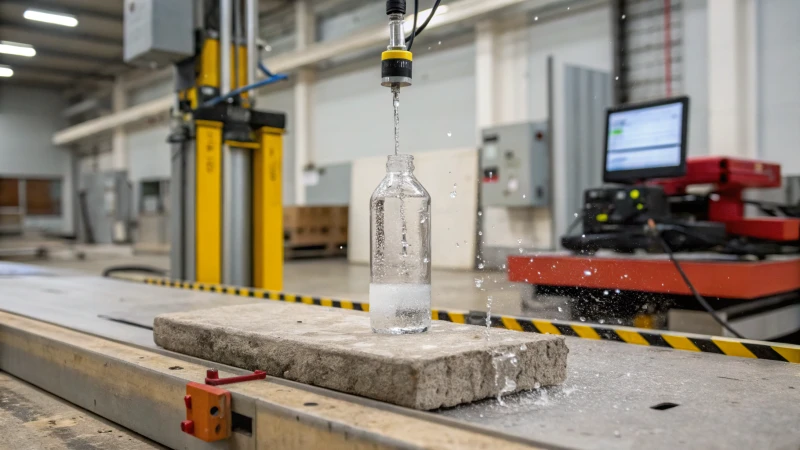
Ever dropped a glass bottle and held your breath, hoping it didn’t shatter?
To conduct a drop test on glass bottles, drop them from 1-1.5 meters onto a hard surface, experimenting with different positions like flat side and edge down. Document any damage, such as cracks or leaks, to evaluate durability.
While these are the basics, truly mastering the drop test involves understanding each step’s nuances. Imagine my first attempt: bottles lined up like soldiers, each one taking its turn against the concrete floor. I learned quickly that precise measurement and consistency were key. With a bit of patience and practice, I fine-tuned my process to ensure each bottle stood a better chance of survival. Dive into our comprehensive guide, where I share these insights and more to help you optimize your testing process, enhancing the durability of your packaging.
Dropping bottles from 1-1.5 meters tests durability.Vrai
Dropping from this height simulates common impacts, assessing durability.
Testing only the flat side orientation is sufficient.Faux
Testing various orientations ensures comprehensive assessment of durability.
What Equipment Do You Need for a Drop Test?
Have you ever dropped something fragile and held your breath, hoping it wouldn’t shatter? Well, that’s where a drop test comes in handy!
To perform a drop test, I rely on a trusty drop tester machine, precise measuring tools for height accuracy, essential safety gear, and a controlled environment. These are my go-to essentials for ensuring consistent and reliable results.
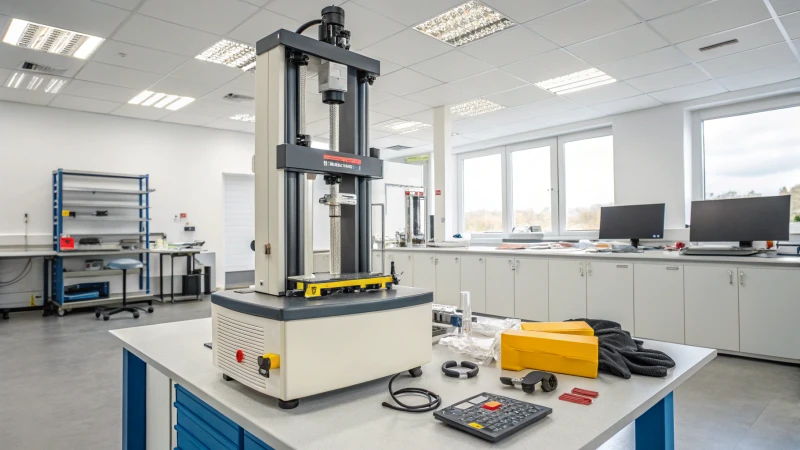
Essential Equipment for Drop Testing
I remember the first time I prepared for a drop test. My heart was pounding because I knew how crucial it was to ensure the safety and durability of the packaging. Here’s what I’ve learned about the equipment needed:
| Equipment | Purpose |
|---|---|
| Drop Tester | A machine designed to release the sample from set heights consistently. |
| Measuring Tape | Ensures accurate height measurement for the drop. |
| Safety Gear | Includes gloves and goggles to protect against potential hazards. |
| Marked Floor | A smooth, hard surface to mimic real-world impacts. |
Using a Drop Tester Machine
A drop tester machine1 is the backbone of this whole operation. It’s like having a reliable partner that helps me set precise drop heights and angles, making sure each test is spot on. The adjustable settings let me simulate different real-life conditions, which is pretty neat.
Importance of Measuring Tools
In my experience, getting the height just right is super important. That’s why I always have a trusty measuring tape2 on hand. For those times when I need extra precision, laser measures come into play, offering that exactness I sometimes crave.
Safety Precautions
Conducting these tests taught me that safety is key, especially with glass materials involved. Wearing protective gloves and goggles3 isn’t just smart; it’s essential. Plus, working in a clean, controlled environment helps minimize any unexpected surprises.
Setting Up a Controlled Environment
A controlled environment isn’t just about being tidy; it’s about consistency. Using a marked floor4 ensures the surface is right every single time. It reduces those pesky variables that might mess with the results.
Additional Considerations
Over time, I’ve realized that understanding industry-specific needs is crucial. Whether it’s tweaking drop heights or testing various orientations, like flat side down or edge down, it all matters in assessing durability.
By using the right equipment and sticking to best practices, I find that these drop tests offer invaluable insights into product resilience. It’s all part of ensuring that when things do fall, they’re ready to take the hit.
A drop tester machine is essential for accurate drop tests.Vrai
The drop tester ensures consistent drop heights and angles, crucial for accuracy.
Safety gear is optional when conducting drop tests.Faux
Safety gear like gloves and goggles are necessary to prevent injuries.
How Do Different Drop Heights Affect Glass Bottle Durability?
Have you ever nervously watched a glass bottle teeter on the edge of a table, fearing that one small nudge could send it crashing to the floor?
Glass bottle durability is largely determined by drop height. The higher the drop, the greater the impact force, increasing the chance of breakage. Factors such as bottle shape, glass type, and the surface it lands on also play significant roles in durability.
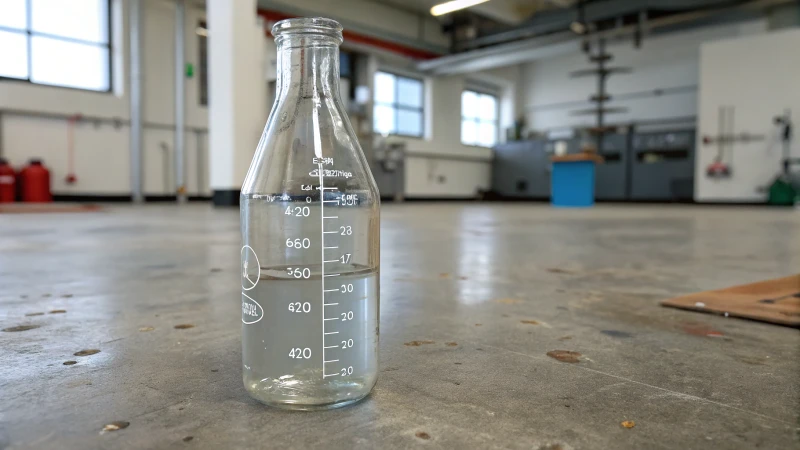
Understanding Impact Force
There was this one time when I accidentally knocked over a glass bottle from my kitchen counter—about 1.5 meters high—and watched in horror as it shattered into a million pieces. It made me curious: how does height impact the fate of our beloved glass containers?
When we drop a glass bottle, the height from which it plummets plays a critical role in determining the impact force it encounters upon hitting the ground. The potential energy equation, (E = mgh), where (m) is mass, (g) is gravity, and (h) is height, explains why a bottle dropped from 1.5 meters shatters more easily than one from just half a meter.
Material Matters
In my journey through the world of cosmetic packaging, I’ve learned not all glass is created equal. Borosilicate glass5, for instance, often withstands higher drops better than soda-lime glass due to its superior thermal shock resistance and overall durability.
| Glass Type | Durability | Thermal Shock Resistance |
|---|---|---|
| Soda-lime | Lower | Moderate |
| Borosilicate | Higher | High |
Bottle Shape and Design
The shape of a bottle can be just as crucial as the material itself. I recall testing a batch of rounded bottles that fared remarkably well in drop tests, thanks to their ability to distribute impact forces more evenly. Conversely, sharper-edged designs seemed to crack or chip more easily, focusing force on specific points.
- Rounded Designs: Better at absorbing impacts.
- Angular Designs: More vulnerable to cracking and chipping.
Testing for Durability
If you’re like me and want to ensure your bottles can withstand real-world mishaps, conducting systematic drop tests is key. Start from various heights:
- 0.5 Meters: Great for lighter, less robust bottles.
- 1 Meter: The industry standard for most glass bottles.
- 1.5 Meters: For those high-end or travel-size products needing extra durability.
Real-world Applications
Understanding how different heights affect durability isn’t just academic; it can guide your packaging choices. I’ve found that when products are likely to face rough handling during shipping, thicker glass or protective packaging can be lifesavers.
Explore insights on packaging design improvements6.
Additional Considerations
- Surface Type: I discovered firsthand that a concrete floor is far less forgiving than a carpeted one.
- Bottle Contents: Surprisingly, the liquid inside can alter how energy is dispersed upon impact.
- Cap Integrity: Post-drop security checks on closures are vital to prevent leaks and contamination.
By weaving these insights into your testing protocols, you can craft more resilient glass bottles that meet your specific needs.
Borosilicate glass withstands higher drops than soda-lime glass.Vrai
Borosilicate glass has superior durability and thermal shock resistance.
Rounded bottle designs are more prone to cracking.Faux
Rounded designs distribute impact forces evenly, reducing breakage risk.
Why Is Orientation Important in Drop Testing?
Ever wondered why a simple twist or angle can make or break your product’s durability? Dive into the world of drop testing and discover why orientation isn’t just a minor detail—it’s a game-changer.
Orientation in drop testing mimics real-world impacts at various angles, revealing potential product weaknesses. By testing different orientations, manufacturers can enhance product durability and ensure safety across diverse conditions.
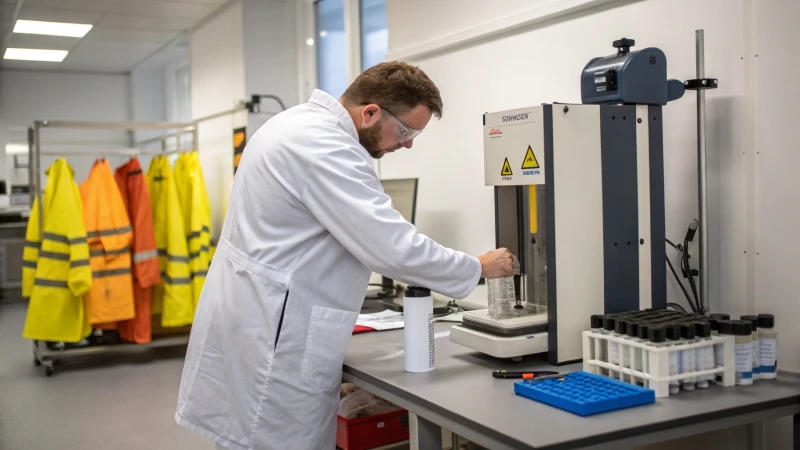
Understanding Impact Angles
I remember the first time I watched a drop test in action. It was like seeing a ballet of chaos, where bottles tumbled and spun unpredictably. In real life, packages don’t just drop vertically; they twist and turn, hitting the ground at odd angles. Testing different orientations during a drop test7 is like simulating these real-world acrobatics. This method exposes vulnerabilities that might be hidden if you only tested from one angle.
Take, for instance, a bottle that might look tough enough when it lands flat but reveals its true fragility when it lands on its edge. By diving into these potential weak spots through varied orientation testing, I’ve seen manufacturers significantly bolster their packaging designs.
Key Orientations in Drop Testing
When I conduct drop tests, I always cover several key orientations:
| Orientation | Description |
|---|---|
| Flat Side Down | Common impact point; tests overall structural integrity. |
| Edge Down | More vulnerable to cracks; highlights edge strength issues. |
| Cap/Neck Down | Assesses closure integrity under impact. |
Testing across these orientations provides a thorough evaluation, reducing the risk of missing any potential failures.
Practical Applications
Imagine you’re a manufacturer crafting glass bottles for cosmetics. By conducting drop tests in multiple orientations, you ensure each batch can withstand potential transportation hazards8. This not only slashes breakage rates but also boosts customer satisfaction because they receive products intact.
Moreover, with insights from orientation-specific testing, designers can innovate packaging by reinforcing weak areas, such as adding thickness to the glass at vulnerable points or incorporating shock-absorbent materials around caps.
Enhancing Product Safety
In industries like pharmaceuticals or food packaging, safety is non-negotiable. Drop testing across various orientations guarantees that containers won’t leak or shatter under pressure, preserving the integrity of their contents. This is crucial for maintaining product efficacy9 and earning consumer trust.
Ultimately, evaluating how different orientations impact drop tests allows manufacturers to spot design flaws early on, ensuring their products don’t just meet but exceed industry standards for durability and safety.
Drop tests simulate real-world conditions by varying angles.Vrai
Different angles mimic how packages fall in reality, revealing vulnerabilities.
Flat drops are the only orientation needed for effective testing.Faux
Testing multiple orientations reveals weaknesses not seen in flat drops alone.
How Do Material and Shape Influence Test Results?
Ever dropped something fragile and wondered why it broke?
Material and shape influence test results by affecting a product’s resilience to stress and impact. Various materials provide distinct levels of strength and durability, while shapes can change how force is distributed during testing.
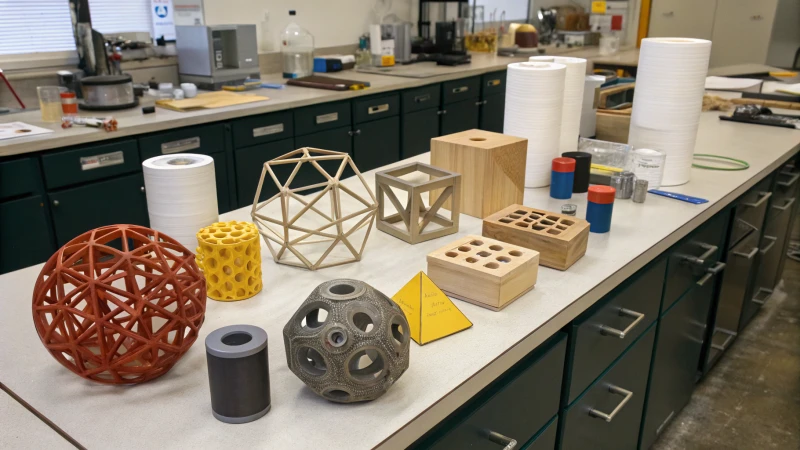
The Role of Material in Testing
Materials play a crucial role in determining the strength and durability10 of a product during testing. I’ve learned over the years that materials can truly make or break a product’s performance in tests. For instance, I once had two batches of glass bottles: one made from soda-lime glass, which tended to crack under pressure, and another crafted from borosilicate glass, renowned for its superior thermal resistance.
In impact tests, materials with higher tensile strength will typically absorb more energy, leading to improved performance. Consider how metals like steel outperform plastics in stress tests due to their superior structural integrity. Here’s a simplified comparison:
| Matériau | Typical Use Case | Test Performance |
|---|---|---|
| Soda-Lime Glass | Beverage Bottles | Moderate |
| Borosilicate Glass | Lab Equipment | High |
| Steel | Construction, Automotive | Very High |
How Shape Affects Test Results
The shape of a product is just as pivotal as the material. Imagine dropping a round ball versus a square block. Rounded shapes tend to distribute force more evenly, minimizing the risk of breakage in drop tests. This is why spherical containers often survive falls better than their square counterparts.
Sharp edges or flat surfaces can focus stress on specific points, increasing the likelihood of failure. For example, dropping a glass bottle on its edge versus its side results in different outcomes due to varying force distribution.
Material and Shape Interaction
The interaction between material and shape can lead to varied test results. Think about a curved design11 in borosilicate glass versus a flat surface design in soda-lime glass; the former can withstand more pressure due to its stress-distributing design.
Consider how packaging design involves strategic decisions about both aspects to enhance product resilience. By optimizing material choices and refining shapes, manufacturers can significantly improve product performance in real-world scenarios. This synthesis is vital in industries like automotive safety12, where optimized material and shape combinations are engineered for maximum impact absorption.
Understanding these dynamics allows industries to innovate and improve product reliability, ensuring consumer safety and satisfaction. By analyzing these factors, industries can tailor their testing protocols to reflect realistic conditions, leading to more accurate assessments of product viability.
Borosilicate glass is more durable than soda-lime glass.Vrai
Borosilicate glass has enhanced thermal resistance, making it more durable.
Square shapes distribute force evenly in impact tests.Faux
Rounded shapes distribute force more evenly, minimizing breakage risk.
Conclusion
Learn how to conduct a drop test on glass bottles to assess durability by dropping them from various heights and orientations, ensuring safety and product integrity.
-
Explore this link to understand how drop tester machines operate and their role in ensuring product durability. ↩
-
This link provides tips on achieving precise height measurements crucial for consistent drop tests. ↩
-
Learn about essential protective gear needed when performing drop tests to prevent injuries. ↩
-
Discover why maintaining a controlled environment is vital for reliable drop test results. ↩
-
Borosilicate glass is more durable than soda-lime glass, especially under thermal stress, making it ideal for certain applications. ↩
-
Improving packaging design can reduce breakage during shipping, ensuring products reach customers intact and maintaining brand reputation. ↩
-
Understanding what a drop test entails can provide insights into its importance in quality control. ↩
-
Exploring ways to reduce transportation damage helps in enhancing product durability. ↩
-
Understanding product efficacy can highlight the importance of maintaining package integrity. ↩
-
Explore why certain materials perform better under stress, enhancing your understanding of material science principles. ↩
-
Learn how curved shapes reduce stress concentration, offering insights into innovative design techniques. ↩
-
Discover how automotive industries utilize material and shape to enhance vehicle safety. ↩



